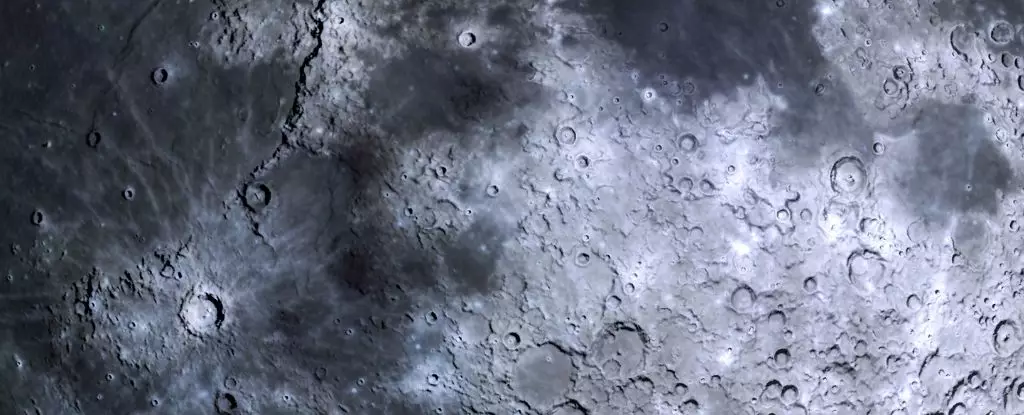At first glance, the Moon appears to be a desolate and inert celestial body, its surface marked by craters and age-old scars. However, a groundbreaking study has unveiled the intriguing possibility that the Moon might be exhibiting geological activity much more recently than previously believed. Notably, certain geological formations on the Moon’s far side have been dated to only 14 million years ago. To grasp the significance of this timeline, one must consider the Moon’s age—approximately 4.5 billion years. In this cosmic context, 14 million years is akin to a mere flicker on a candle, suggesting a hidden dynamism that contradicts long-held assumptions about our nearest neighbor.
Historically, scientists viewed the Moon’s geological activity as largely a phenomenon of its youth. The prevailing belief was that the Moon’s most significant geological events, including volcanic activity, occurred billions of years ago, with the surface cooling off around 3 billion years ago. This cooling caused once-molten magma to solidify, leading to the formation of extensive basalt plains, known as lunar maria, and the inevitable cessation of substantial geological changes.
However, recent research led by geologist Jaclyn Clark at the University of Maryland (UMD) challenges this assumption. By employing advanced mapping techniques, Clark’s team discovered 266 previously undocumented ridges on the Moon’s far side. These ridges provide evidence of tectonic movement in relatively recent geological times, suggesting that the Moon may still be subject to internal forces, reshaping its surface even today. This re-evaluation opens a new chapter in lunar studies and encourages further exploration of the Moon’s geological history.
The implications of this newfound geological activity raise fundamental questions regarding our understanding of the Moon. Clark and her colleagues observed that the ridges traced the contours of lunar maria, those dark plains believed to be formed by volcanic activity triggered by impacts during the Moon’s formative years. Notably, some ridges were found to intersect with impact craters that formed merely 14 million years ago, suggesting they originated from tectonic processes rather than erosion or long-term settlement.
This revelation implies that the Moon is not as inactive as once thought; it indicates ongoing geological processes that are potentially reshaping its surface. Clark’s research suggests that these ridges were active as recently as 160 million years ago, indicating that the Moon may be more geologically dynamic than previously anticipated. Such tectonic activity challenges the notion of a stagnant Moon and contributes to the broader understanding of planetary geology.
One key aspect of this study is the assessment of the Moon’s ongoing global contraction as it cools. The research aligns younger ridge features with the patterns of this contraction, suggesting that the Moon continues to evolve. The presence of such geological activity within the last few hundred million years could mean that the lunar surface is undergoing processes that render it malleable, contrary to the perception of a lifeless rock.
As the Moon continues to cool and contract, its ability to produce new surface features indicates the potential for further discoveries regarding the Moon’s interior processes. This evolving understanding encourages scientists to re-examine long-standing views about other celestial bodies within our solar system, where similar geological activity may yet be undiscovered.
The thrilling possibility that the Moon may still harbor geological activity compels researchers to delve deeper into its geological history. As observations and mapping techniques improve, the prospect of uncovering additional ridges and geological features on both the Moon’s near and far sides presents an exciting challenge for planetary scientists. This study not only reshapes our understanding of the Moon but also highlights the intricacies of celestial mechanics and the dynamic nature of astronomical bodies. Therefore, it is imperative for future studies to investigate and elucidate the geological mysteries remaining on our enigmatic lunar companion, fostering a deeper appreciation of its past and guiding our exploration of the universe beyond.

